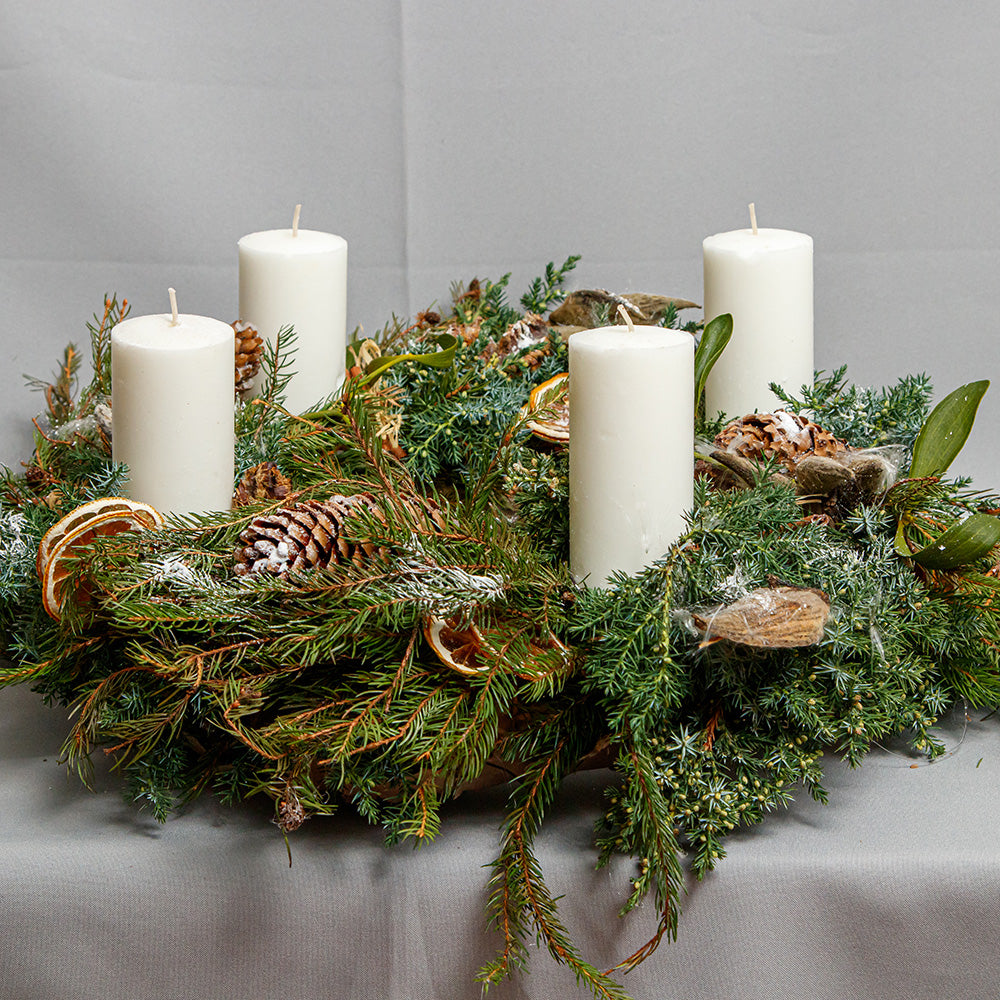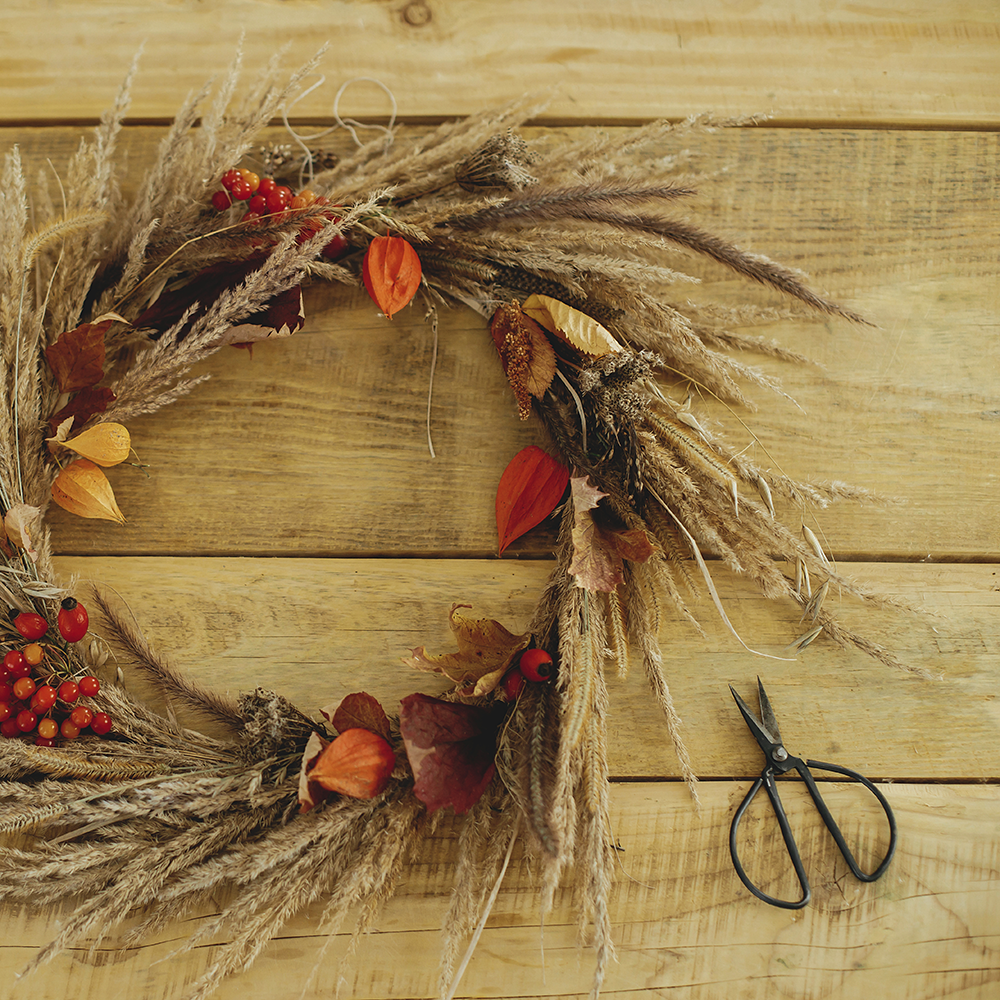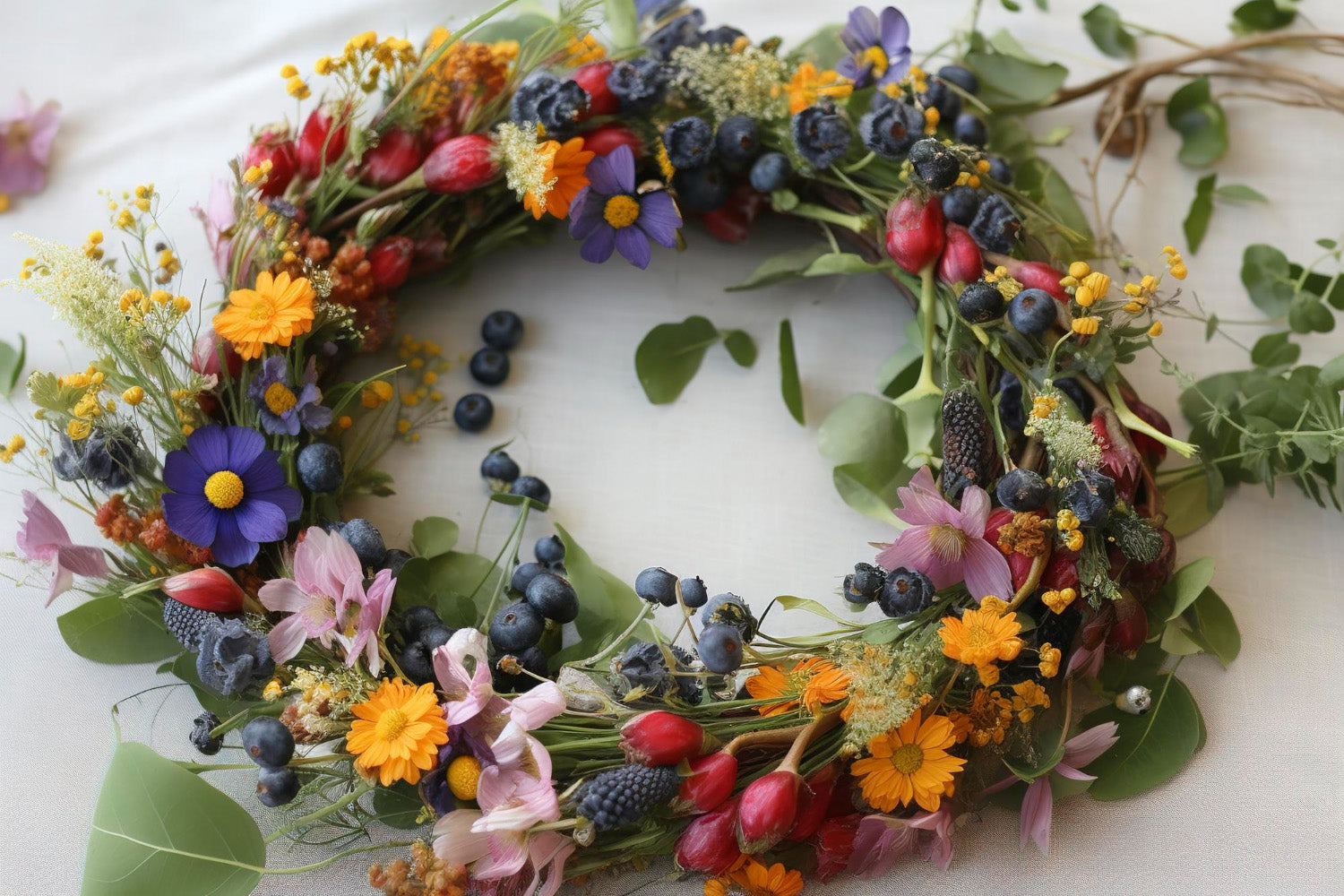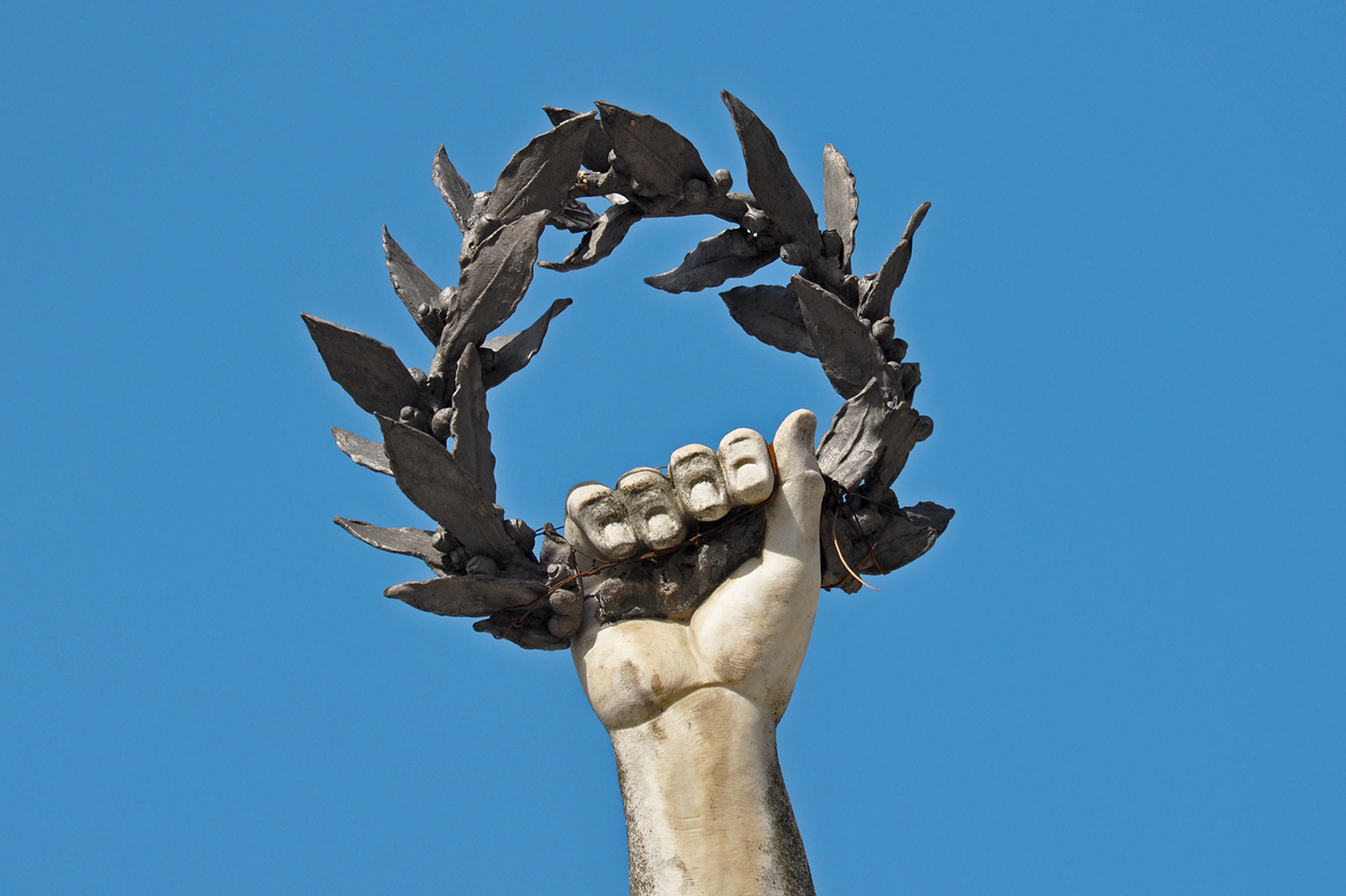The History of Wreaths – From Ancient Times to Modern-Day Use
Let's start with a good old history lesson! You probably have no idea when hanging your summer wreath on your front door that these decorations have been around for thousands of years and have their origins in ancient history.
I was quite surprised too but it makes sense when you look at their progression and how wreaths have been used in different eras.
Origins in ancient history – Wreaths as jewelry and adornments
When we think of wreaths we think of the big circular decorations complete with greenery and flowers and indeed that's what they evolved into. But did you know that in ancient times, wreaths were something completely different?
In Etruscan and Roman times, wreaths were actually pieces of jewelry and adornments and worn as ornamental head pieces. Some were made from precious metals, while others were made from natural materials like olive leaves and vines.
The Romans evolved this one step further and created the laurel wreath
Original natural wreaths – Sacred amulets for harvesting
Eventually, wreaths evolved into important decorative items in ancient Greece and were an important amulet that was used to promote healthy crop harvests. The wreath would be made from harvested plants like wheat, and it would be hung on people's doors for all the year.
The idea was that this sacred amulet would appease the gods and bring protection to farmer's crops against things like plagues which were common in those times.
The first modern wreaths – Advent wreaths in Christianity
Moving hundreds of years forward to the 16th century and we have the first instance of what we would call modern wreaths. These started as Advent wreaths to celebrate and prepare for Christmas, and the first known example was made by a Lutheran priest called Johan Hinrich in Germany.
Advent wreaths were originally used to count down to Christmas over the Advent period and this would involve lighting different candles, with the final candle being lit on Christmas day. While modern wreaths are generally hung from doors, advent wreaths were used as centrepieces on dining tables for example and not hung.
Modern wreaths – Evolution into decorative items
Today, wreaths have evolved again and they are now widely used throughout the year and not confined to one specific event or season. You can get a wreath for a dizzying myriad of occasions such as Christmas, Halloween, spring, Easter, summer, fall, and winter.
Not only that, but many people simply hang wreaths from their door as a form of permanent decoration. They look fantastic and are inviting. With the availability of craft materials, guides, and wreath supplies, many people now love wreath-making as a hobby too.
The Symbolism of Wreaths – From funerals to harvest amulets
As you can see, the way in which wreaths are used has changed drastically since ancient times. But what about the symbolism?
We all know that wreaths look fantastic and are amazing decorative items, but what do they represent to different communities and has their symbolism changed over time? Below, I look at three different types of wreath and their symbolism to show just how diverse these decorations are.
-

Funeral wreaths
Wreaths have been used at funerals for millennia and it is one of the oldest forms of symbolism. Traditionally, wreaths were laid at places of burial to represent the circle of life and its eternal process. The process that things are born, grow, flourish, die, and return to the earth to start the circle once again.
As time progressed, more symbolism was introduced into wreaths. For example, in the Victorian era, funeral wreaths were adorned with flowers to represent resurrection and life. Similarly, memorial wreaths to commemorate fallen war heroes are often adorned with poppies. This has symbolism as it represents hope and sacrifice, but also reminds us of the battlefields of WW1 where poppies grew and still flourish.
-

Advent wreaths
In Christianity, the advent wreath is incredibly common and it is traditionally made from a circle of evergreens which represents everlasting life from Jesus, while the circular shape symbolises the eternal god who has no beginning or end.
Advent wreaths and Christmas wreaths are completely different and should not be confused. Christmas wreaths are just decorative and bring festive cheer, while advent wreaths have symbolism and are focused on the religious aspect of the holidays.
-

Harvest wreaths
Harvest wreaths are still popular today but they have been used for centuries and longer throughout Europe in regions like Scandinavia and Greece. They symbolised growth but in Greece were also used as a symbol to the gods like Anthesteria and Dionysus.
From Pagan and Religious Beginnings to Widespread Decorative Use – The Wreath has had Quite the Journey!
I find it incredibly interesting to see how the simple wreath has been used and how it's purpose and symbolism has changed throughout the millennia and centuries.
From its beginnings as a pagan amulet to promote good harvests, to the development of the Advent wreath in Christianity and its modern use as a seasonal decoration, the wreath has certainly had an intriguing journey.
It's also especially interesting to see how the circular shape has persevered and how it has always represented the circle of life either from a religious perspective of eternal life, or a natural perspective of the cycle of life, death, and regrowth.
I wonder how wreaths will be used hundreds of years from now and if their story will evolve yet again?

Frequently asked questions
Where does the tradition of wreaths come from?
Wreaths have been used in different forms from ancient history. They have been used as adornments such as the laurel wreath for important persons in Greek and Roman history. In ancient Greece, harvest wreaths were also made as a ritual to call on the gods to give good fortunes for farmer's crop production. In modern history, the advent wreath was the first and was originally used by Lutheran Germans in the 16th Century.
Is the origin of the wreath pagan?
Not really, in modern history, German Lutherans used wreaths in the Advent season in preparation for Christmas which means they have a religious origin. However, harvest wreaths were created in ancient Greece as a type of amulet to bring good fortune for famer's harvests and for crop protection which has a more paganistic background.
What is the symbolism behind wreaths?
The general circular shape of wreaths typically represents everlasting life or the continuous circle of life. In Christianity, wreaths also symbolize eternal life, god, and things like flowers symbolize birth and new growth.








